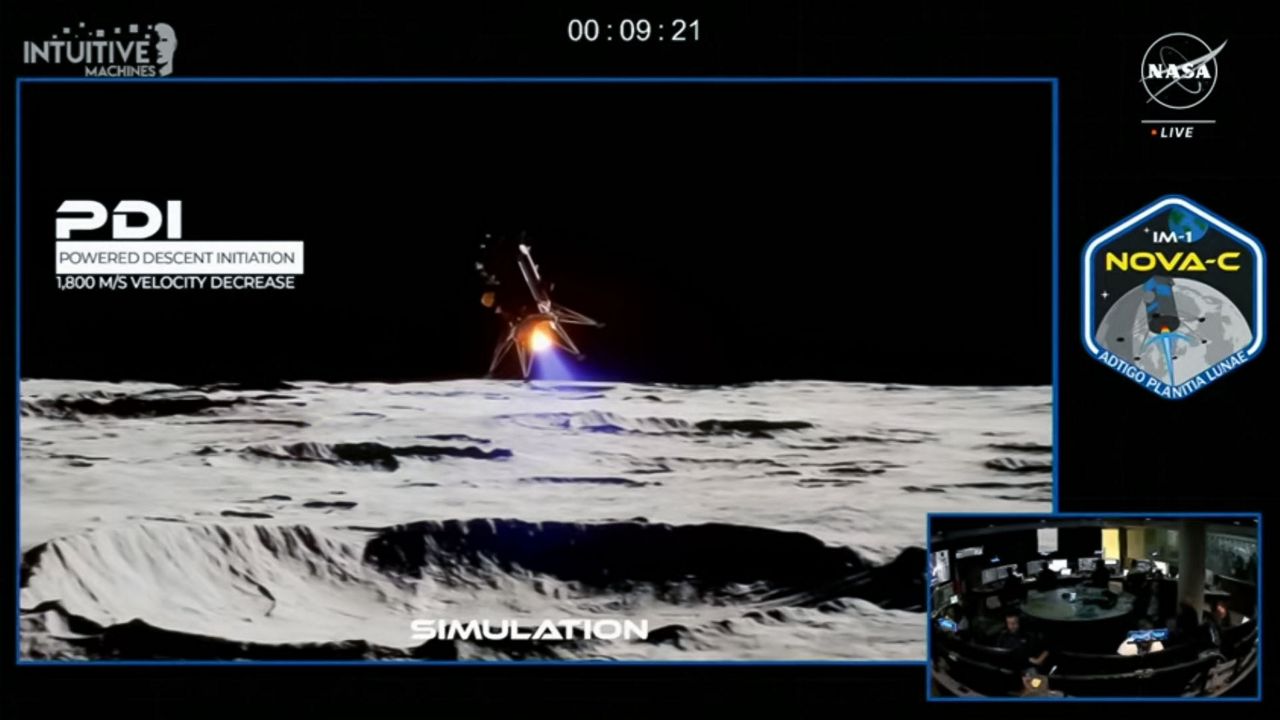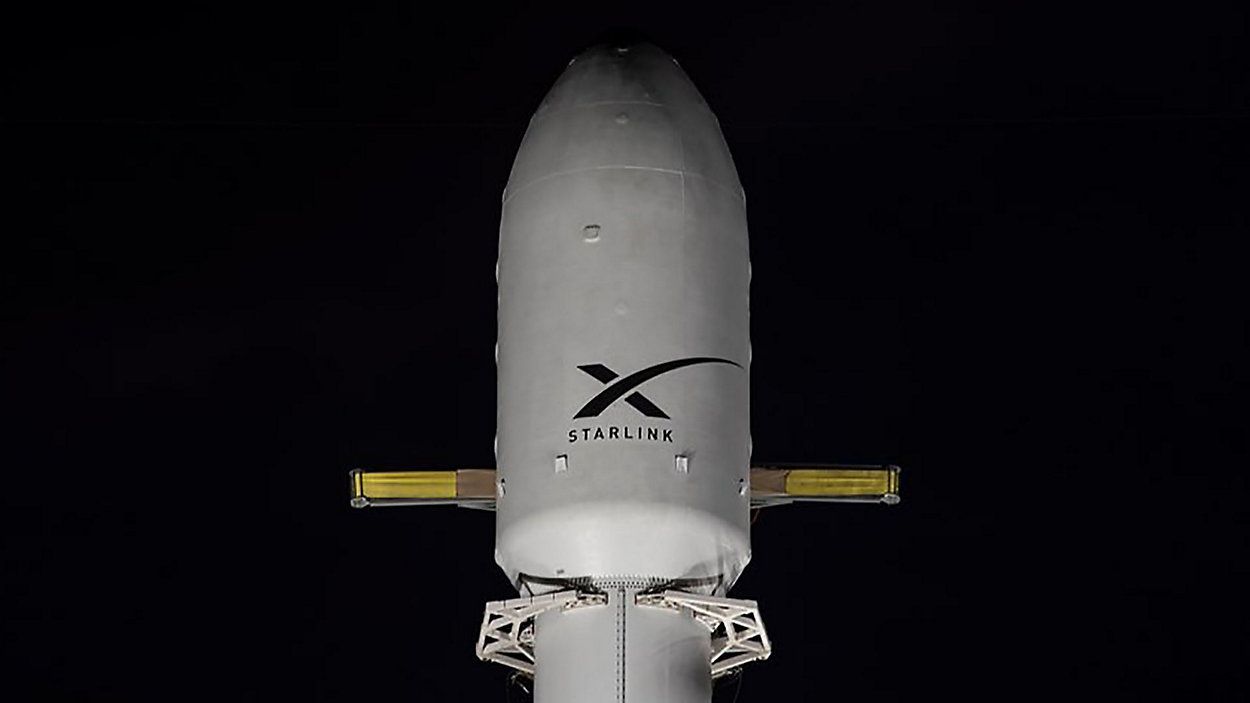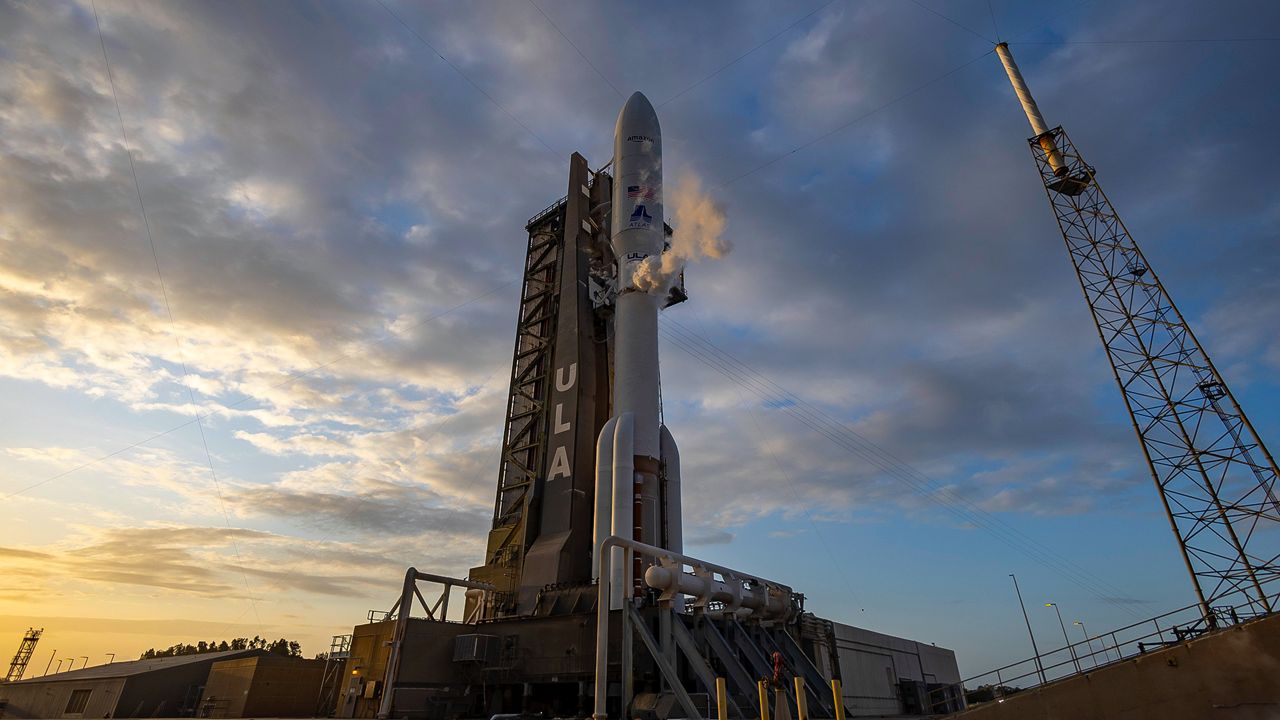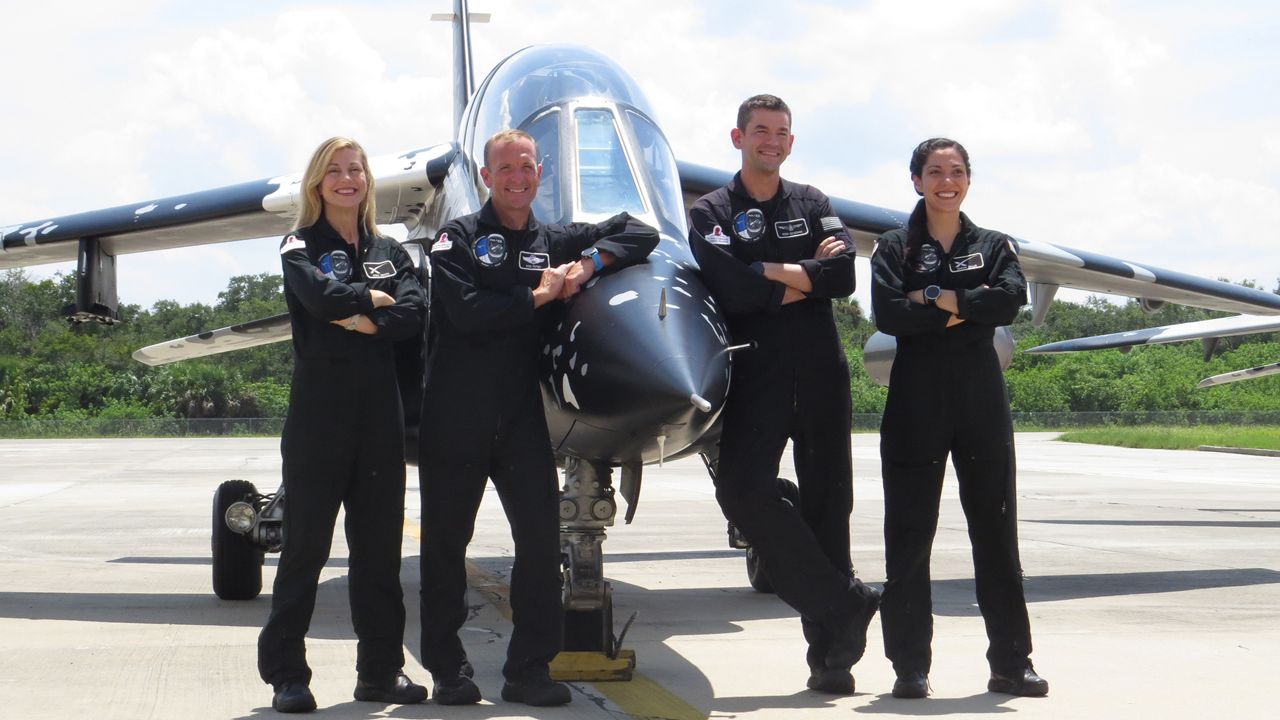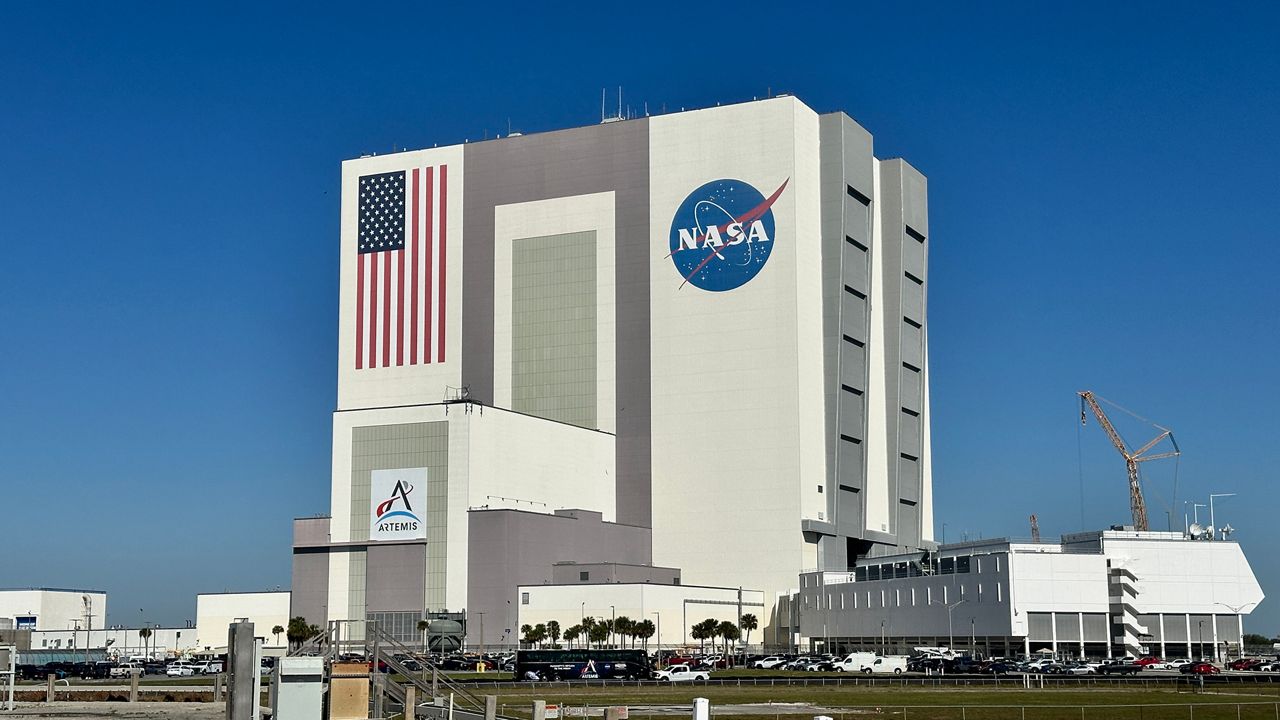CAPE CANAVERAL SPACE FORCE — Intuitive Machines became the first private commercial company to land a spacecraft successfully on the moon on Thursday evening with its IM-1 mission.
What You Need To Know
- It is the first time a company has landed on the moon
- Get the breakdown of how the moon landing happened
- Learn about the payloads and experiments that are on the Nova-C lunar lander
- 🔻Go down to see how NASA's Dr. Glaze explains how the IM-1 mission was possible🔻
- Get more space coverage here ▶
- RELATED: Learning about Embry-Riddle Aeronautical University’s EagleCam
- 🔻Scroll down to watch the moon landing🔻
Countdown to moon landing
At around 6:24 p.m. ET, Intuitive Machines’ Nova-C lunar lander, named after the Greek hero Odysseus, had a soft touchdown at crater Malapert A, near the south pole of the moon.
Odysseus had a series of different times of landing on the moon, from 5:49 p.m. ET, to 5:30 p.m. ET, then from 4:24 p.m. ET, and then finally 6:24 p.m. ET, stated NASA on X, formerly known as Twitter.
The Houston-based Intuitive Machines stated that the landing sensors were not operating on Odysseus and the IM-1 team decided to put it in another orbit to resolve the issue.
It took a while for the IM-1 team to connect with Odysseus, with NASA explaining during its live feed that communications between the lunar lander and various stations on Earth were expected.
But after a few strained minutes, a faint signal was detected.
"Houston, Odysseus has found its new home,” said Dr. Tim Crain, IM-1’s mission director.
Co-founder and CEO of Intuitive Machines Steve Altemus told the IM-1 team that it was an “outstanding effort” by them and the landing was a “nail biter” due to the communications issues.
“Welcome to the moon,” Altemus said.
NASA Administrator Bill Nelson called Odysseus’ voyage a “cosmic bridge” from the launch pad at Kennedy Space Center to the moon.
Nelson highlighted how NASA’s Commercial Lunar Payload Services program connected Intuitive Machines, SpaceX and the U.S. space agency for the IM-1 mission.
“… a commercial lander named Odysseus, powered by a company called Intuitive Machines, launched upon a SpaceX rocket, carrying a bounty of NASA scientific instruments and bearing the dream of a new adventure. A new adventure in science, innovation and American leadership in space, well, all of that aced the landing of a lifetime,” he said.
“Today for the first time in more than a half century, the U.S. has returned to the moon. Today for the first time in the history of humanity, a commercial company, an American company, launched and led the voyage up there. And today is the day that shows the power and promise of NASA’s commercial partnerships,” Nelson continued.
Two hours after the landing, Intuitive Machines posted on X that Odysseus is upright and it has started to send data.
Arriving and staying on the moon
The last time the United States was on the moon, it was during the 1972 Apollo 17 mission. The IM-1 mission is the first time America has been to the moon in more than 50 years and the first time a commercial company has landed on the lunar satellite.
The Houston-based Intuitive Machines’ Nova-C lunar lander took about eight days to travel to the moon, after lifting off from Florida’s Kennedy Space Center on Thursday, Feb. 15.
A few days before the historical event took place, Josh Marshall, Intuitive Machines’ communications director, gave Spectrum News a breakdown of Odysseus’ landing.
“We are using Unreal Engine 5 (software) to interpret flight telemetry data from the lander up until PDI (powered descent initiation). Then, we are switching to an animation-only (not live telemetry) through vertical descent. Telemetry sent from the lander to flight controllers in Nova Control serves as the confirmation of soft touchdown,” Marshall explained.
And while animation was seen during the landing phase, there will be actual images, Marshall promised.
“Nova-C is programmed to take images during descent. We expect the first images to arrive on Earth approximately 30 minutes after touchdown. We expect EagleCam images to arrive after several hours on the lunar surface,” he stated.
Scroll down to “A series of firsts” to learn more about the EagleCam.
The NOVA-C lunar lander is expected to be active for seven Earth days to complete the tasks it and its payloads hope to complete.
But after seven days, it will not be able to survive the lunar night, which is about two Earth weeks, Marshall stated.
“Because of the extreme cold temperatures, Nova-C's electronics are expected to freeze and not recover after the lunar night passes,” he shared in an email.
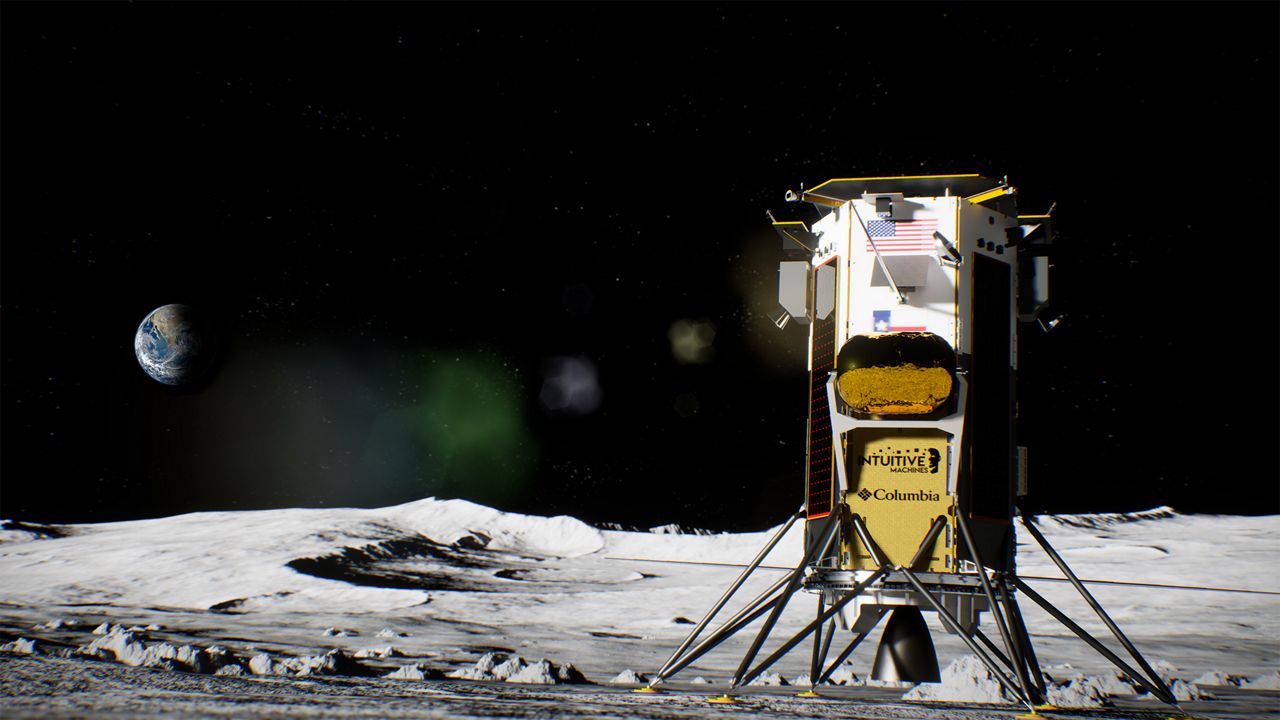
A series of firsts
This mission is packed with a lot of firsts, in addition to being the first time a private company successfully lands on the moon.
This will be the first time there will be photos of a spacecraft landing on the moon, thanks to Embry-Riddle Aeronautical University’s CubeSat camera system called EagleCam.
“Even after working on EagleCam for four years, it still seems surreal that EagleCam will be the first object to record a (third) person point of view of a spacecraft landing on the moon,” explained Taylor Yow, an aerospace engineering grad student at the university and EagleCam project manager.
Yow shared that the EagleCam will eject from the Nova-C lunar lander when it is about 99 feet (30 meters) above the moon’s surface during the final descent stage.
“It will take three images a second from each of its three cameras (a total of nine images a second), capturing its six-second freefall to the surface and Odysseus’ descent and soft landing,” she stated.
About an hour after landing on the moon, the EagleCam project team will receive a series of images and Yow and Dr. Troy Henderson, associate professor of aerospace engineering at the Daytona Beach, Fla. university and director of the EagleCam project, will select five photos and post them on the team’s Instagram page: @eraueaglecam.
“We will have more than 1,300 images from the lander and lunar landscapes, and other data products at the end of the mission which lasts about 30 minutes,” explained Daniel Posada, an aerospace engineering doctoral candidate and EagleCam team lead.
And it will be the first time Wi-Fi will be used for data transmission on the moon.
Henderson explained to Spectrum News that the team developed custom Wi-Fi antennas to demonstrate the first time Wi-Fi will be used on the lunar surface.
“The EagleCam team developed custom Wi-Fi antennas for this demonstration. The Wi-Fi provides short-range communications to collect the data from the deployed EagleCam to an on-board computer, where the data waits for transmission to Earth,” according to Henderson.
And it is the first time a university had a payload, the EagleCam, sent to the moon’s surface.
Why NASA's CLPS program made the IM-1 moon mission possible
The Houston-based Intuitive Machines was selected for the IM-1 mission as part of NASA’s Commercial Lunar Payload Services program. Dr. Lori Glaze, director of NASA's Planetary Science Division, explains what CLPS is all about.
All about the payloads
Besides the EagleCam, there are other payloads going to the moon, many of which are from NASA, like its laser retroreflector that will work as a landing beacon for orbiting craft.
The Lunar Node 1 Navigation Demonstrator is a beacon “lighthouse,” according to NASA, that will help guide incoming spacecraft to land.
All total, NASA has six payloads, but in addition to Embry-Riddle Aeronautical University’s EagleCam, four companies will have payloads — like Hawai’i’s International Lunar Observatory Association’s ILO-X, where one of its main objectives is to get the first image of the Milky Way Galaxy’s center from the moon.
And artist Jeff Koons will have his artwork Moon Phases as a payload as well.
- In a previous Spectrum News article, Steve Altemus, the co-founder and CEO of Intuitive Machines, shared why space travel is the evolution of a commercial market.
After IM-1 and the future
The focus of the IM-1 mission is for Intuitive Machines to learn how to fly the Odysseus, but there is more to that, Marshall shared.
“(We want to) collect as many data insights to apply lessons learned to each of our subsequent missions, IM-2 and IM-3,” he stated.
Currently, the IM-2 mission is set for some time this year, according to Marshall.




